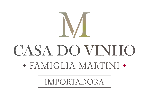
Château CamplazensJulius
In the mouth this red wine is a powerful with a nice balance between acidity and tannins.
This wine generally goes well with beef, veal or pasta.
Taste structure of the Julius from the Château Camplazens
Light | Bold | |
Smooth | Tannic | |
Dry | Sweet | |
Soft | Acidic |
In the mouth the Julius of Château Camplazens in the region of Languedoc-Roussillon is a powerful with a nice balance between acidity and tannins.
Wine flavors and olphactive analysis
On the nose the Julius of Château Camplazens in the region of Languedoc-Roussillon often reveals types of flavors of leather, chocolate or non oak and sometimes also flavors of earth, oak or black fruit.
Food and wine pairings with Julius
Pairings that work perfectly with Julius
Original food and wine pairings with Julius
The Julius of Château Camplazens matches generally quite well with dishes of beef, pasta or veal such as recipes of beef colombo bourguignon style, macaroni and cheese gratin or osso bucco.
Details and technical informations about Château Camplazens's Julius.
Discover the grape variety: VB Cal 6-04
Interspecific crossing obtained in Switzerland by Valentin Blattner between Riesling x Sauvignon Blanc and a variety whose name has not yet been communicated and which is resistant to the main cryptogamic diseases. VB Cal 6-04 can be found in Switzerland, Belgium, Germany, etc. In France, a few plantations have been carried out and it is registered in the Official Catalogue of wine grape varieties under the name Sauvignac liste A.
Last vintages of this wine
The best vintages of Julius from Château Camplazens are 2011, 2013, 2008
Informations about the Château Camplazens
The Château Camplazens is one of of the world's greatest estates. It offers 23 wines for sale in the of La Clape to come and discover on site or to buy online.
The wine region of La Clape
The wine region of La Clape is located in the region of Languedoc of Languedoc-Roussillon of France. Wineries and vineyards like the Château la Négly or the Château la Négly produce mainly wines red, white and pink. The most planted grape varieties in the region of La Clape are Mourvèdre, Bourboulenc and Roussanne, they are then used in wines in blends or as a single variety. On the nose of La Clape often reveals types of flavors of cherry, white pepper or apples and sometimes also flavors of dried fruit, bramble or black olive.
The wine region of Languedoc-Roussillon
Languedoc (formerly Coteaux du Languedoc) is a key appellation used in the Languedoc-Roussillon wine region of southern France. It covers Dry table wines of all three colors (red, white and rosé) from the entire region, but leaves Sweet and Sparkling wines to other more specialized appellations. About 75% of all Languedoc wines are red, with the remaining 25% split roughly down the middle between whites and rosés. The appellation covers most of the Languedoc region and almost a third of all the vineyards in France.
The word of the wine: Biodynamic (agriculture)
Organic agriculture is part of a vision of the world linking the plant and all living beings to the cosmos and basing work in the vineyard and the cellar on the cycles of the moon.














